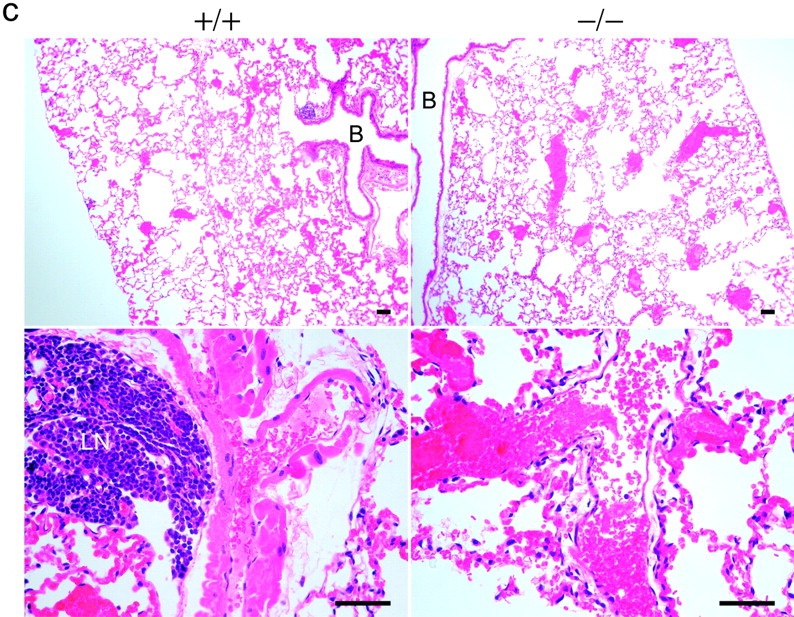Discrete Role for Cytosolic Phospholipase A(2)alpha in Platelets: Studies Using Single and Double Mutant Mice of Cytosolic and Group IIA Secretory Phospholipase A(2)
05-08-2002
J. Exp. Med. 2002 Aug 5;196(3):349-57.
doi: 10.1084/jem.20011443.
doi: 10.1084/jem.20011443.
Among several different types of phospholipase A(2) (PLA(2)), cytosolic PLA(2) (cPLA(2))alpha and group IIA (IIA) secretory PLA(2) (sPLA(2)) have been studied intensively. To determine the discrete roles of cPLA(2)alpha in platelets, we generated two sets of genetically engineered mice (cPLA(2)alpha(-/-)/sPLA(2)-IIA(-/-) and cPLA(2)alpha(-/-)/sPLA(2)-IIA(+/+)) and compared their platelet function with their respective wild-type C57BL/6J mice (cPLA(2)alpha(+/+)/sPLA(2)-IIA(-/-)) and C3H/HeN (cPLA(2)alpha(+/+)/sPLA(2)-IIA(+/+)). We found that cPLA(2)alpha is needed for the production of the vast majority of thromboxane (TX)A(2) with collagen stimulation of platelets. In cPLA(2)alpha-deficient mice, however, platelet aggregation in vitro is only fractionally decreased because small amounts of TX produced by redundant phospholipase enzymes sufficiently preserve aggregation. In comparison, adenosine triphosphate activation of platelets appears wholly independent of cPLA(2)alpha and sPLA(2)-IIA for aggregation or the production of TX, indicating that these phospholipases are specifically linked to collagen receptors. However, the lack of high levels of TX limiting vasoconstriction explains the in vivo effects seen: increased bleeding times and protection from thromboembolism. Thus, cPLA(2)alpha plays a discrete role in the collagen-stimulated production of TX and its inhibition has a therapeutic potential against thromboembolism, with potentially limited bleeding expected.
Location: Seattle | Hong Kong | Guangzhou | Sydney | Singapore
Copyright©2023 Arbele All Rights Reserved.

